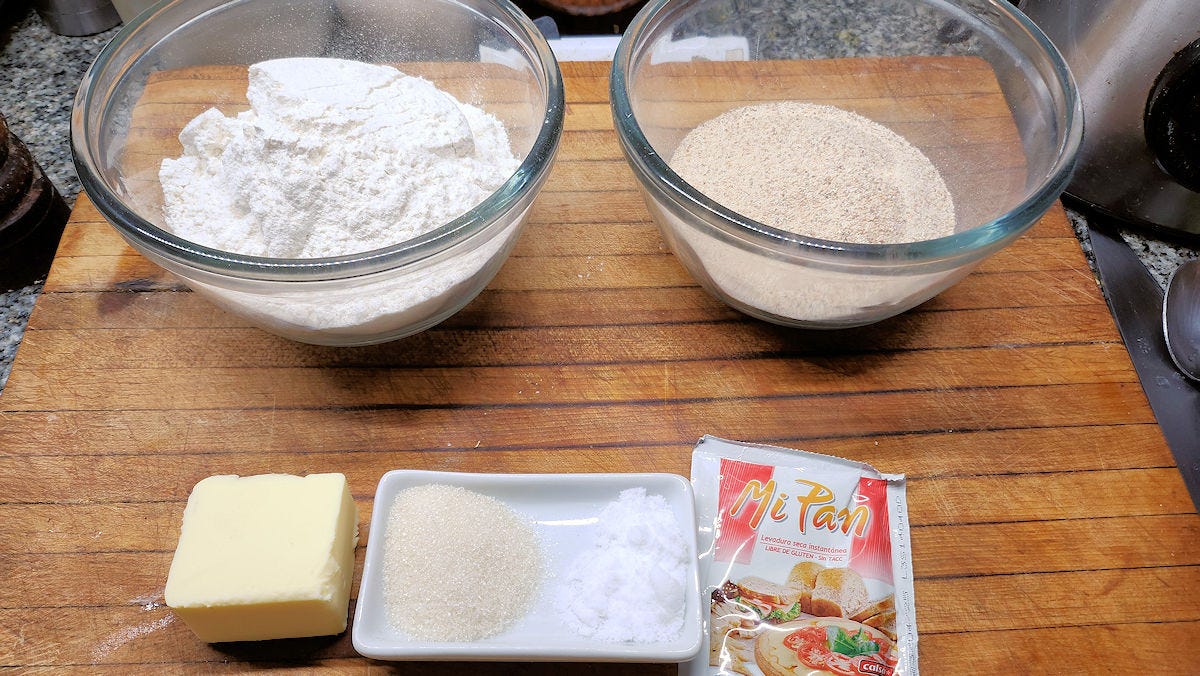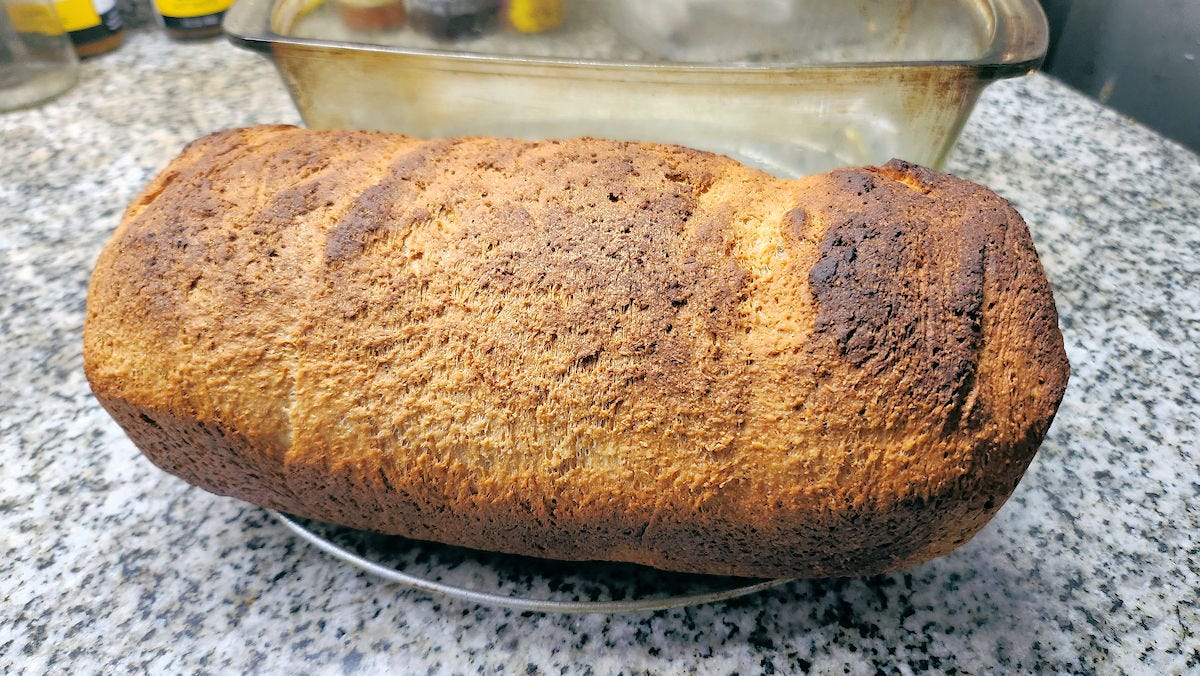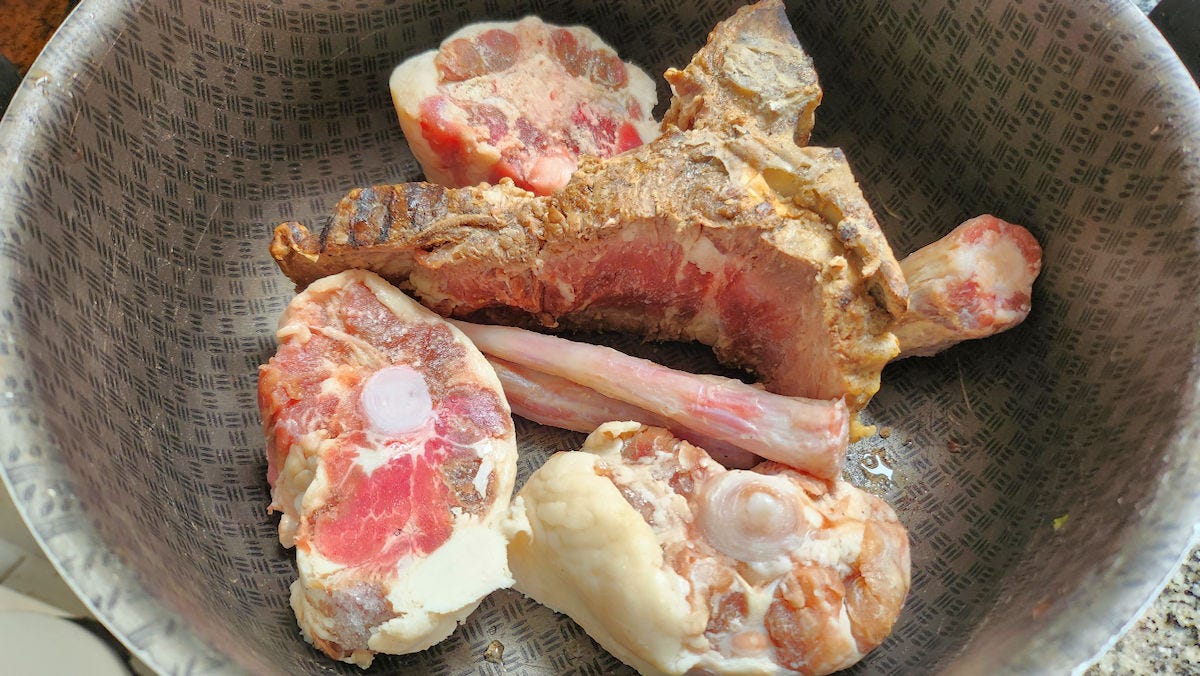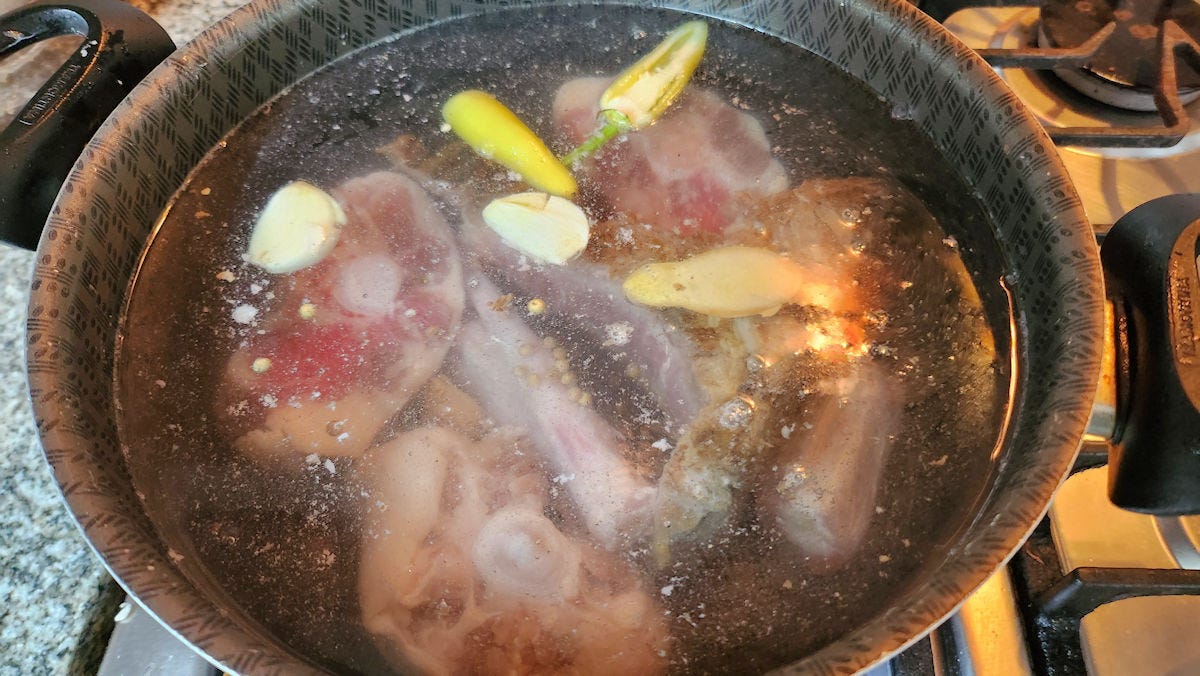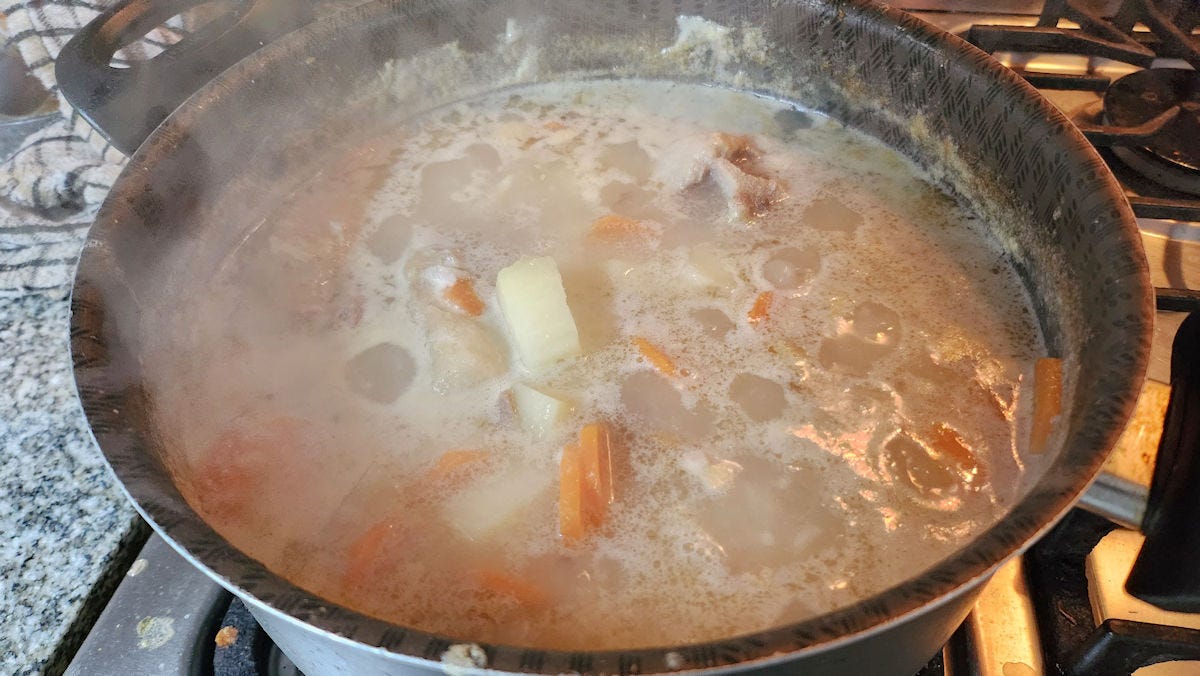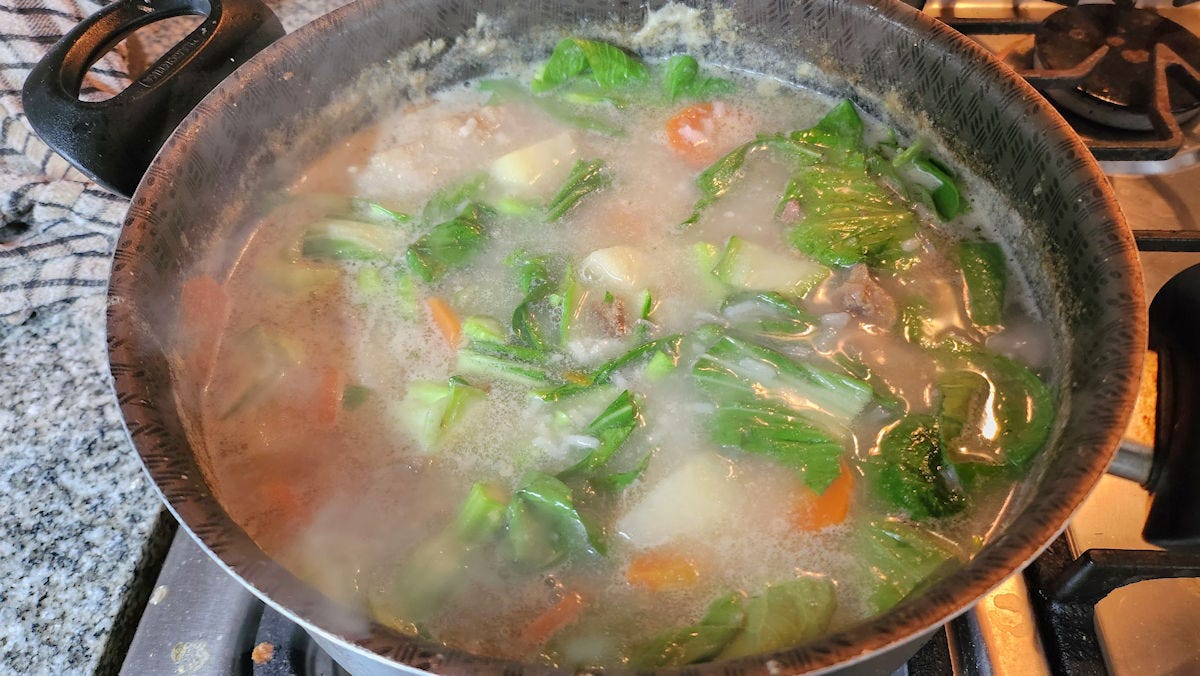The Bread & Soup Project #60 - Fiji
In which we head to the South Pacific to begin the Fs
The Pacific Ocean, to date, has gotten short shrift in this project. I guess we could count Australia, but I’m thinking more of the myriad of island countries in the region, and for those, the closest we’d get would be the sultanate of Brunei so far. It’s nice to move away from Africa for a little, since it just seems a lot of African countries start with a letter in the first part of the alphabet. I know, I could do these in any order I wanted, but alphabetical was a convenient choice to just sort of mix things up around the globe.
Today, we’re off to the island nation of Fiji. Located about 2000 km, or 1300 miles, northeast of New Zealand, it consists of 330 separate actual islands, 110 of them with permanent habitation, plus, more than 500 “islets”. In total, the land mass is about 18,300 square kilometers, or 7,100 square miles, or somewhere between the size of Connecticut and New Jersey; or, for European subscribers, about the size of Slovenia. The population of all of it put together is somewhere south of a million, of whom about 10% live in the capital, Suva.
Roughly, 2/3 are Christian (half of those Methodist), and most of the remaining 1/3 are Hindu. The majority, almost 60%, are native Fijians, with almost all the rest coming from surrounding island nations. Primary languages are English, Fijian, and a local dialect of Hindi.
Not surprising, as a former British colony, the flag reflects those origins with both the Union Jack, and the crowned lion shield, albeit with local symbols filling in the quadrants.
Although during the colonial era much of the cuisine was influenced by British staples - wheat, rice, and tea - the cuisine overall is based on foraging, fishing, coconuts, and homegrown roots and vegetables. There’s a significant Indian and Indonesian influence with a lot of curries, or dishes with curry-style spicing.
When it came to breads, a lot of them were either fairly classic European style breads, or cassava or coconut based “cakes”, either savory or sweet. But the Fijian Long Loaf seemed to get a lot of favor, with quite a few online folk noting that it can pretty much be found on any table at any meal. Basically it’s a fairly plain white bread. But there’s also a fair amount of evidence for part of the wheat flour to be replaced by cassava (manioc, yuca) flour as an economic move against the cost of imported wheat. So that’s where we’re going today.
Numerous soups were touted as common - most of them involved basically simmering some root vegetables in coconut milk, adding some ginger, garlic, and chilies, and your choice of protein. Not very interesting for this project, and as more than one Fijian waxed nostalgic about their childhood memories of Sui, a beef bone broth, I thought I’d work from there.
We have two cups of bread flour, one cup of cassava flour (not cassava, or tapioca, starch, that we use here in Argentina and Paraguay for making chipas, but a coarser whole flour), 60gm (4tb) of softened butter, two teaspoons of sugar, a teaspoon and a half of salt, and some bread yeast.
Do all the stuff you do to mix it all together and make a dough, with just enough water to get a non-sticky, but smooth and elastic dough. Cover in a buttered bowl and let it rise, then form into a “long loaf” either on a sheet tray or in a loaf pan, let it rise again, and bake in a hot oven until golden brown.
And, there we have it.
Every single recipe I found for Sui was different. There was overlap, but it all seemed to come down to, “make a beef one broth and then add things to it”. I just rummaged through the freezer and found some oxtail and the remains of a t-bone that I’d stuck in there for just such a purpose.
I added some sliced garlic, ginger, and a split chili, some peppercorns, and a little salt, and topped it up with water. Brought it to a simmer, skimmed the scum off it, and let it simmer over lowest heat for about four hours. At the end of the four hours, I removed the t-bone and shredded the meat off of it and put it back into the pot. The oxtails I left alone to continue cooking as is, and to be able to put a piece in each bowl.
Meanwhile, preparing the things to add. A potato, an onion, a carrot, some bok choy (filling in for a green that’s not available outside of Fiji), some ginger, garlic, and rice. The rice is a slight stretch - generally, this soup is served with either boiled cassava or rice on the side, and people either alternate, or mix it in - I decided to just put it in the soup at the end, as did a few online writers.
This was an interesting point of divergence among the online recipes. Several called for simply chopping up the onions, garlic, and ginger, but several others called for pounding them together into a paste, or, in modern day, running them through a blender. I opted for that, just because it’s different, using just a little of the simmering broth to smooth it out.
Add this onion-garlic-ginger slurry to the pot, plus the diced or sliced carrot and potato. Bring it back to a simmer and cook for about twenty minutes, until the vegetables are soft.
It will reduce again some, to look more or less like this. Add the rice, cook another fifteen minutes.
Add the chopped greens, simmer another five to ten minutes just to soften them.
Check the seasoning - I added both salt and a bit of pepper here. And, we’re ready to serve.
And here we have it. It’s customary to serve Sui with a wedge of lemon and some hot chilies on the side. The bread, not so customary, as noted above, but I’m shoehorning it into this project, so there.
Both, absolutely delicious. We almost finished off the pot of soup the first night, leaving just enough for two bowls for lunch the next day. And the bread - love it. The cassava gives it a really interesting toasty flavor. And, it became our morning toast the rest of the week.
And we’ll be off next to Finland - I’m wavering between a salmon soup and a blood dumpling soup. The latter is definitely a more interesting one, but the question will be if it will get eaten (I will, not sure about my other half - then again, he doesn’t like salmon).



